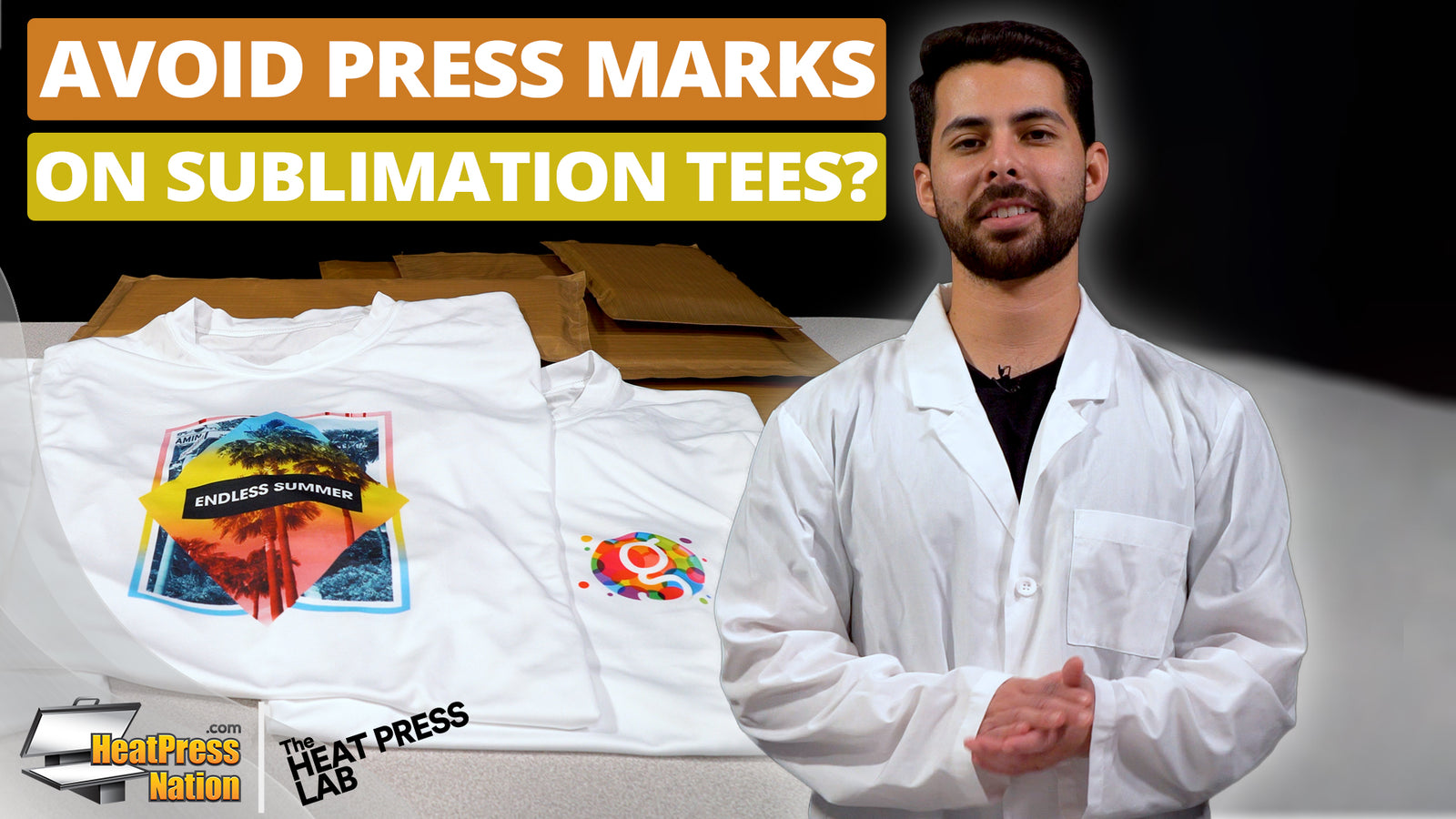Can You Avoid Press Marks On Polyester Tees?
Have you ever pressed the perfect sublimation transfer onto a polyester T-shirt, but find that your heat press left marks around it? Stay tuned as we'll be looking into how one soft tool can help solve this common issue. Let’s get started!
One of the more common issues when sublimating polyester clothing happens right after a transfer is applied. As you open up the machine to see the stunning look of your custom garment, you might also notice some faint, not-so-stunning press marks around your image scorched by the machine’s heating element. For the most part, these marks are unfortunately as permanent as the transferred image, meaning that no amount of repressing or washing will make them truly go away. If you’re looking to sublimate your next garment with extremely reduced, or even no press marks however, there are tools that can help work around this issue.

Enter the Sof-Fusion Pressing Pillows, which are a set of four different sized tools mainly designed to treat the usual trouble spots like folds, collars, and buttons when pressing apparel. Using these or similar pillows will indeed be helpful for polyester fabrics, as they won’t only keep the item itself flat, but they’re also able to treat any hard edges prone to leaving press marks. As a result, pressing pillows help significantly reduce their appearance, leaving your transferred designs to further stand out on their own. But how effective are pressing pillows exactly with polyester T-shirts? Is it better to use a pillow that’s the size of the shirt or of the printed image?

To answer the first question, we’ll be sublimating the same 8-inch design on two polyester tees. One will be pressed without a pillow, and the other will be pressed with a mid-sized pillow that’s large enough to cover our transfer. As a general tip, if your machine’s pressure feels too heavy for your fabric item, you can swap out your heat press’s removable silicone pad with the pressing pillow alone. Depending on how thin your item is, you may also need to wrap your pillow with parchment paper to prevent dye migration onto it. Lastly, we recommend against going beyond medium pressure when using pressing pillows to prevent them from flattening out. Try not to set pressure too low however, as the transfer may begin to ghost as a result. With all this in mind, we’ll go ahead and apply the sublimation transfers to our T-shirts.
With our shirts sublimated, let’s take a closer look at our results. Starting off with the one pressed without a pillow, the press marks are clearly visible around the design as expected.

By comparing it with the other shirt pressed with a pillow, you can barely notice any scuffs left by the machine. Especially when trying to look at it from a distance, the shirt’s design ultimately pops out more than any imperfections on the shirt itself.

Now it’s clear on which way to go in terms of avoiding press marks on your sublimation garments, but how about when dealing with smaller transfers?
Continuing to use a larger pressing pillow as we’ve demonstrated is perfectly acceptable, though if you’re mainly working with smaller transfers, you may be curious if using a smaller pressing pillow would be enough to work with. To test this out, we’ll be sublimating a chest logo onto another polyester tee, sliding the smallest pressing pillow inside and positioning it around the top right corner of the shirt. Of course, we’ll be wrapping our pillow with parchment paper in case any dyes leak past the shirt.
Now let’s take a closer look at the sublimated chest logo on our shirt. The logo looks clean and colorful as expected, while it's still hard to notice any marks left around it. In some cases you may see marks around the trimmed transfer’s edges, which mainly happens from setting a slightly higher temperature or pressure than needed. So if you plan on sublimating multiple polyester tees with a chest logo for instance, you may need to lower such settings, especially pressure if necessary. You can refer to your machine’s pressure counter or gauge if available, which can help keep consistent pressure across a large set of items.

Overall, it’s indeed possible to avoid leaving obvious press marks on your polyester T-shirts. All it takes is sliding appropriately sized pressing pillows below or inside them, and making sure you’ve set the right pressure before applying your transfer. But if you’re someone who’s had lingering questions about any heat transfer, feel free to drop a comment below for us to revisit down the line. To learn more about sublimation tools, pressing pillows, and other products, be sure to visit our website at HeatPressNation.com. For any questions, feel free to contact a MyExpert representative at heatpressnation.com/support.


